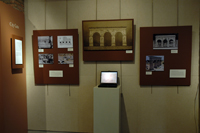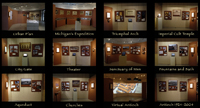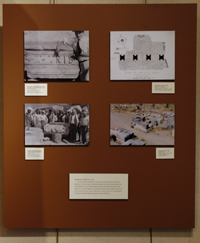
Duderstadt Gallery: Section 5 - City
Gate
In AD 129, with funding from the mayor of the city, Gaius Julius Asper Pansinianus, Antioch built a new City Gate—a triple-bayed arch with decoration carved in relief. Although a wide variety of decorative motifs was available to the City Gate’s designers, they consciously chose to emulate the decoration of the triumphal-arch gateway (propylon) to the Imperial Cult Sanctuary. Motifs found on both gates include winged figures holding garlands, fantastic creatures, and weapons. Inscriptions show that the propylon was dedicated to Rome’s first emperor, Augustus, and the City Gate to the current emperor, Hadrian, and his wife, Sabina. This decorative emulation was a political statement that evoked a favorable comparison between Hadrian and his predecessor Augustus. The dedication of the City Gate coincided with Hadrian’s visit to Antioch.
The Michigan team excavated the remains of the City Gate during the later
part of the summer of 1924. The structure had completely collapsed over
the centuries, and only a small percentage of its stones remained at the
site at the time of excavation. Many of the missing stones had been removed
and reused in the construction of buildings in the nearby town of Yalvaç.



